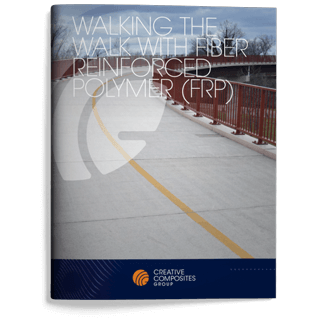Molded Composite Decking
FiberSpan™ Lightweight FRP Bridge Decks
When it comes to revitalizing aged, rusted steel bridge decks, our FiberSpan fiber-reinforced polymer (FRP) stands out as the ideal solution for a lightweight yet incredibly strong enhancement. Many older bridges feature decks made from deteriorating wood or heavy steel that urgently require replacement. FiberSpan molded decking not only helps preserve the structural integrity and functionality of these aging bridges but also removes restrictive load ratings that can hinder heavy truck passage.
Designing FRP Deck Panels
FRP is the preferred material in scenarios where a bridge is unable to bear the considerable weight of a traditional concrete deck along with the demands of modern traffic. Remarkably, FRP panels are 80 percent lighter than their reinforced concrete counterparts, making them an outstanding alternative for engineering solutions. Our FRP vehicle decks are meticulously crafted to adhere to rigorous design standards, including allowable stress design (ASD), AASHTO specifications, and specific loading requirements, alongside strain/shear criteria, temperature fluctuation needs, and fire resistance outlined in ASTM E-84.

Installation of FRP Molded Decking
The installation process for FRP decks is straightforward due to their lightweight construction. Each panel can be efficiently bolted on-site, allowing for a smooth and rapid assembly process. Designed to effectively manage braking loads, the connection clips integrated into the decking resist both uplift forces and lateral movement, ensuring a stable platform. These clips are secured into an embedded stainless-steel plate within the FRP panel, enhancing durability.
To prevent damage from wheel impacts, curbs can be reinforced with robust stainless-steel plates, which can be seamlessly molded into the FRP deck. Additionally, a dark aluminum oxide overly eliminates heavy asphalt and enhances the longevity and performance of the decking. The use of large, prefabricated FRP panels eliminates the labor-intensive processes often associated with assembling numerous smaller pieces or pouring concrete, streamlining the installation while ensuring a strong, reliable surface for vehicular traffic.
